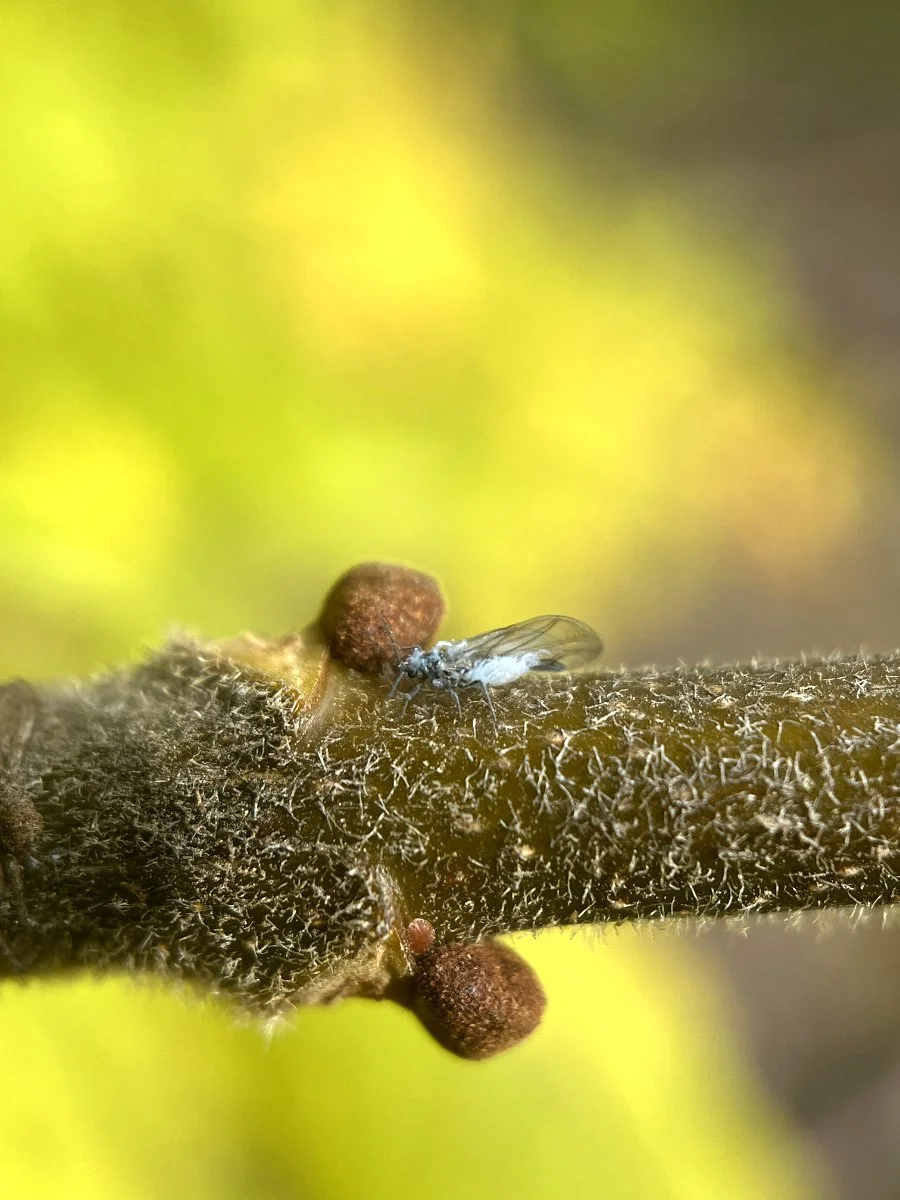Over the past couple of weeks I have been seeing tons of woolly aphids floating through the air. So I decided to follow them around to see where they were going and take a photo of one when it landed. I found some of them landing on ash branches and snapped a couple of photos.
Wait, let me back up a little. The reason I was chasing down aphids was because I came across this black and yellow fly with dark red eyes hovering around. I thought they were beautiful as they perched on vegetation in the sunlight. I was lucky enough to get a photo of one and I put the photo in iNaturalist. A list of a bunch of flies came up in the Syrphidae family. These are commonly called syrphids or hover flies. Some of the identification suggestions listed for my photo included Common Loopwing Aphideater, Western Aphideater, Black-tailed Aphideater and Bare-winged Aphideater. iNaturalist listed 10 suggestions and they all were black and yellow syrphid flies that looked very similar to me. So, I thought I would do a little reading on syrphid flies in general. I discovered that the primary diet of the larval stage of many syrphids is aphids!
The adults are not predators. Their diet mainly consists of flower nectar and pollen, consequently they are important pollinators. Finding them on flowers combined with their size and coloration, they can be mistaken for bees and wasps. Syrphid flies don’t sting or bite so this mimicry is a form of protection from predators. Also, the diet of adult syrphids can include the sugary honeydew secreted by aphids.
So, back to the beginning of this post. I followed the aphids around to see where they were going and thought I might find some syrphid flies hovering around. I did! Being that aphids are the syrphid larvae’s primary food source, they want to lay their eggs near aphids.
Syrphid flies are quick fliers and I was unable to follow them for very long as they zoomed through the landscape. So I wasn’t able to see them laying eggs. I also realized that this endeavor is probably best pursued during the warmer days of late spring and summer when I see more aphid colonies congregating on leaves and probably more syrphids nectaring nearby on flowers. Some species of syrphids overwinter as adults, but most overwinter in the larval or pupal stage in protected areas such as leaf litter. In moderate climates, they can be seen year round.
So next year I will be looking more closely and hopefully I will see the syrphids laying eggs and larvae eating aphids!
Nature is an inexhaustible source of wonder. I hope to see you out there!
Resources
Syrphid Flies. https://extension.umn.edu/beneficial-insects/syrphid-flies. Accessed 5 Nov. 2025.
Syrphid Flies | NC State Extension Publications. https://content.ces.ncsu.edu/syrphid-flies. Accessed 5 Nov. 2025.
Syrphids (Flower Flies, or Hover Flies) / Home and Landscape / UC Statewide IPM Program (UC IPM). https://ipm.ucanr.edu/natural-enemies/syrphids/#gsc.tab=0. Accessed 5 Nov. 2025.


